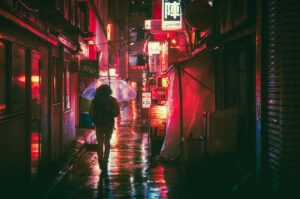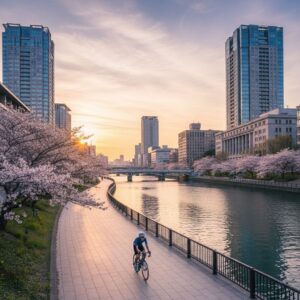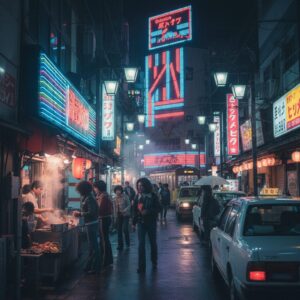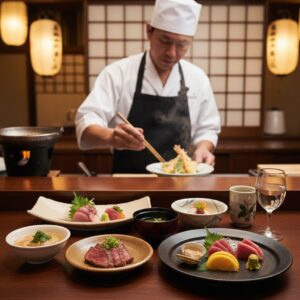Step off the roaring thoroughfare of modern Osaka, just a ten-minute walk from the glittering skyscrapers and human torrents of Umeda Station, and you’ll find a place where time doesn’t just slow down; it breathes. This is Nakazakicho, a neighborhood that feels less like a district and more like a beautifully preserved secret. It’s a delicate web of narrow, winding alleyways where pre-war wooden houses stand shoulder-to-shoulder, their tiled roofs and weathered facades whispering stories of a Japan that most cities have long since paved over. This isn’t a museum or a theme park recreation. It’s a living, breathing community, a quiet rebellion against the relentless march of progress, where the city’s creative heart beats strongest. For the traveler yearning for authenticity, for the artist seeking inspiration, for the soul in need of a gentle pause, Nakazakicho is not just a destination; it’s a feeling. It’s the thrill of discovery around every corner, the scent of pour-over coffee mingling with old wood, and the quiet joy of finding a one-of-a-kind treasure in a shop run by someone who poured their heart into creating it. This is where you come to get lost, and in doing so, find a piece of Osaka that will stay with you forever.
The Echo of Showa: A Neighborhood That History Spared
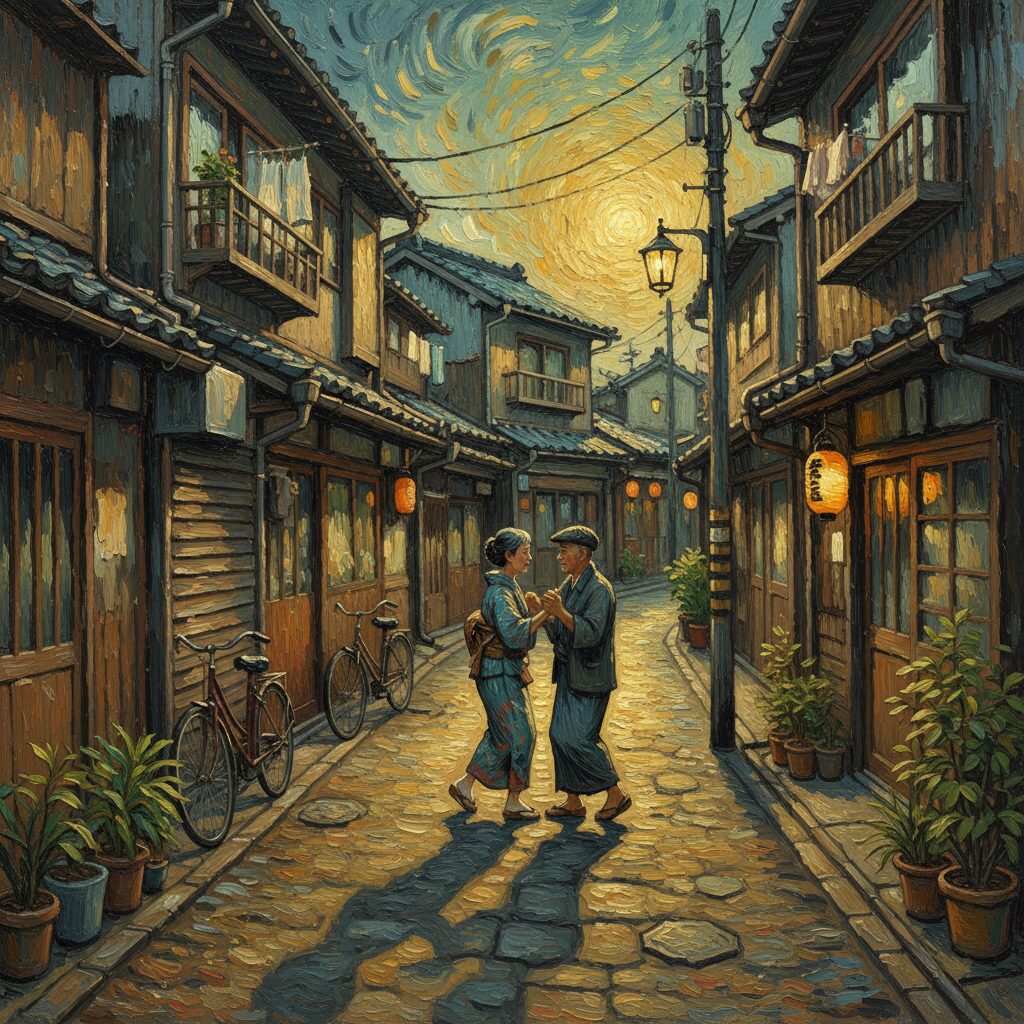
To truly grasp the charm of Nakazakicho, you first need to understand its story of survival. During World War II, extensive air raids destroyed much of Osaka, clearing the way for the post-war economic boom and the expansive modern metropolis we see today. Yet, by some miracle, this small part of the city was largely preserved. The result is a time capsule—an architectural gallery from the Taisho (1912-1926) and early Showa (1926-1989) eras. The buildings here are not grand temples or castles; they are modest `nagaya`, traditional wooden row houses where everyday people lived and worked. These two-story structures feature dark timber beams, sliding paper screens, and delicate latticework known as `koshi`. As you stroll through the lanes, run your hand along the textured plaster walls and sun-bleached wood. Notice the mismatched window panes, slightly crooked door frames, and tiny gardens nestled into tight spaces, overflowing with potted plants and herbs. This imperfection is the source of its deep beauty. It offers a tangible link to the past, distinctly contrasting with the sleek steel and glass of nearby Umeda. This historical backdrop is more than just a setting; it is the very essence of Nakazakicho. The artists, café owners, and shopkeepers who have settled here over recent decades are not erasing this history; they are working alongside it. They have chosen to restore and repurpose these old homes, honoring their original character while breathing new, creative life into them. This reverence for the past is what makes the neighborhood feel so genuine and truly enchanting.
Mastering the Maze: A Guide to Getting Joyfully Lost
Your exploration of Nakazakicho starts at Nakazakicho Station on the Tanimachi subway line, just one stop away from Higashi-Umeda. Alternatively, if you’re arriving from the extensive JR Osaka Station or Hankyu Umeda Station, it’s a pleasant and surprisingly short walk eastward. As you step away from the main roads, the city’s noise diminishes, replaced by a gentle calm. The first rule of discovering Nakazakicho is to forget all rules. Put your map away, turn off your GPS, and let your curiosity guide you. The area is a maze, but a small and welcoming one. There’s no grand main street or a single must-see attraction. The delight lies in the act of exploration itself. Joy comes from the chance discovery of a hidden cafe down an unnamed alley, a whimsical mural on a garage door, or a small shop selling handmade ceramics you find by accident. The streets are narrow, sometimes barely wide enough for two people to pass. You’ll share the paths with locals on bicycles, cats basking on rooftops, and the quiet footsteps of fellow wanderers. My best advice is to spend an afternoon with no fixed plan. Begin wandering in one direction, then turn down a street that catches your eye. Follow the sound of soft music or the scent of freshly baked bread. Peek through open doorways that welcome you in. This is not a place to be conquered; it is a place to be absorbed. Weekday afternoons are the best times to visit when the atmosphere is at its calmest. Weekends bring more visitors, creating a lively buzz, but it can feel a bit crowded in the small shops and cafes. Keep in mind that many businesses are small, independent operations, so opening hours may vary. Many don’t open until noon or 1 PM and are often closed on Tuesdays or Wednesdays. A relaxed, flexible mindset is the most important thing to bring along.
The Cafe Culture: Where Coffee and Creativity Converge
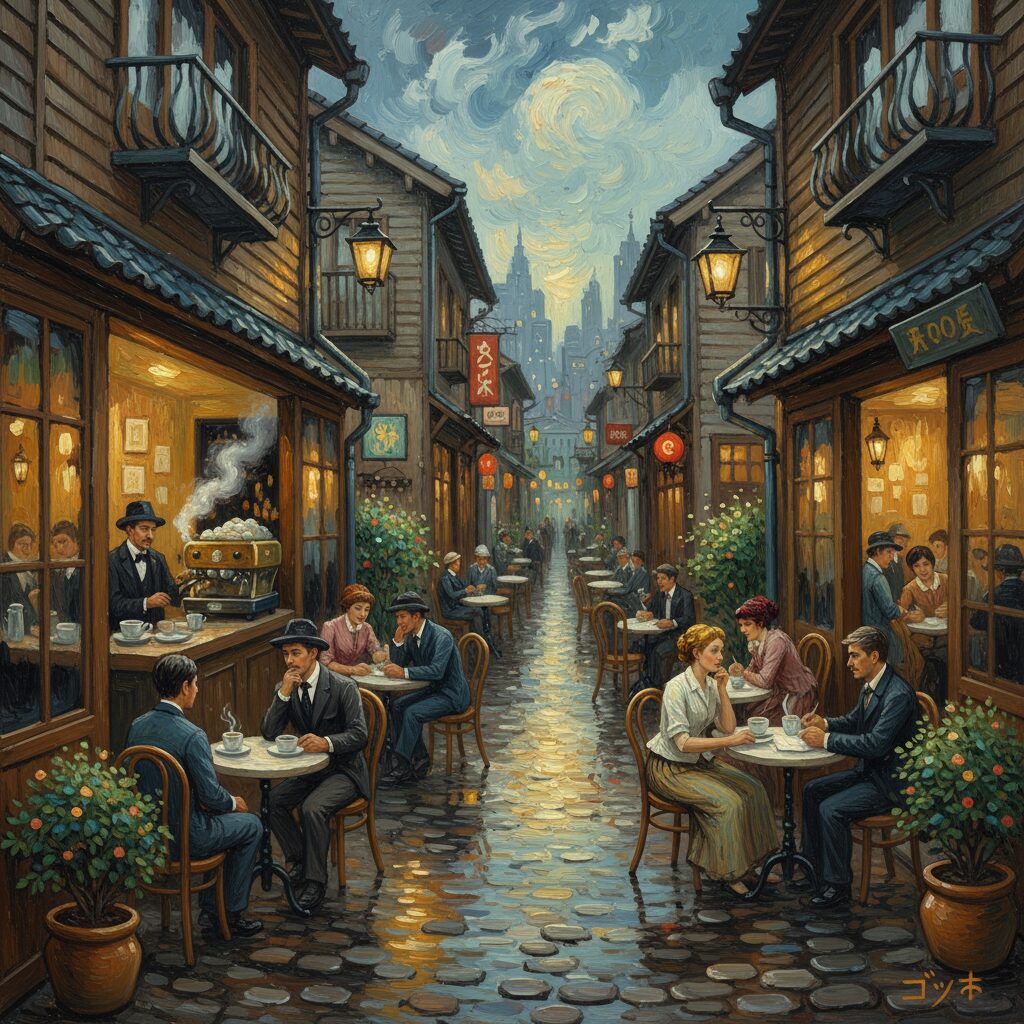
Nakazakicho is, above all else, a haven for cafe enthusiasts. The cafes here are more than just spots for a quick caffeine boost; they are destinations unto themselves, each a distinctive world nestled within a carefully restored `kominka`, a traditional Japanese house. Entering one of these cafes feels like stepping into someone’s home—a home that happens to serve exceptional coffee and cake. The experience is intimate, cozy, and profoundly refreshing.
The Quintessential Kominka Cafe
Picture sliding open a weathered wooden door that creaks with age. Inside, the air is cool, infused with the aromas of dark roast coffee and hinoki wood. You’ll be invited to remove your shoes at the `genkan`, the sunken entryway, before stepping onto polished wooden floors or soft tatami mats. Soft lighting filters through delicate paper screens or small, original glass windows. The furniture is a thoughtfully curated mix of vintage Showa-era pieces—low tables, mismatched wooden chairs, and perhaps a well-worn velvet sofa. This is the quintessential Nakazakicho cafe experience. The menu is typically simple but meticulously crafted: a selection of single-origin pour-over coffees, a rich gateau au chocolat, a seasonal fruit tart, or a creamy matcha latte. The emphasis is on quality and atmosphere. These are places to linger with a book, enjoy a quiet conversation, or simply soak up the tranquil ambiance. The sounds are subdued—the gentle clink of ceramic cups, the soft murmur of other patrons, the slow drip of coffee through a filter. It’s a meditative experience that calms the mind and soothes the soul.
Art Galleries in Disguise
Some cafes in the area also serve as art spaces, blurring the boundary between gallery and coffee shop. In these venues, stark white walls may be decorated with contemporary paintings or avant-garde photography, creating a compelling interplay between the historic structure and modern art inside. The atmosphere is slightly more eclectic and intellectual. You might sip an espresso beside a striking sculpture or discuss a photograph with the barista, who could also be the artist. These spaces often feature rotating exhibitions, ensuring there is always something new to discover. They attract a creative crowd, with artists, designers, and writers frequently sketching in notebooks or engaged in lively conversations. The menu may be more experimental, offering unique tea blends or artisanal sodas alongside expertly crafted coffee. It’s a perfect blend of Osaka’s rich history and its vibrant, forward-thinking contemporary art scene.
The Niche and the Novel
Beyond the traditional and artistic, Nakazakicho hosts cafes dedicated to specific passions. You might come across a tiny owl cafe, where you can enjoy your tea while watching these majestic birds. Or perhaps a book cafe, with walls lined floor-to-ceiling with vintage volumes, inviting you to lose yourself in literature for hours. There are cafes specializing in elaborate parfaits, shops focusing solely on Taiwanese teas, and even a few themed around particular characters or hobbies. These establishments stem from the owner’s personal enthusiasm, a passion evident in every detail of the decor and every item on the menu. They offer a more playful and whimsical experience, reminding visitors that in Nakazakicho, there’s always a delightful surprise waiting to be uncovered.
A Curated Treasure Hunt: The World of Indie Boutiques and Zakka
For those with an appreciation for fashion, design, and unique craftsmanship, Nakazakicho is a genuine treasure trove. The shopping experience here stands in stark contrast to the fast-fashion chains and department stores of Umeda. Each shop is a small, independent venture, reflecting its owner’s distinct taste and skill. The emphasis is on items that are vintage, handmade, or carefully curated—each possessing its own story.
The Vintage Vanguard
Nakazakicho is famous for its vintage and secondhand clothing stores. These are not vast thrift shops piled with forgotten clothing. Instead, they are thoughtfully curated boutiques where every piece is chosen for its style, quality, and character. You’ll discover shops specializing in American workwear from the 1950s, bohemian dresses from the 1970s, and bold, structured pieces from Japan’s fashion-forward 1980s. The shop owners are often stylists and fashion historians themselves, passionate about the tales behind the garments. They can share the origins of a particular fabric or explain the significance of a specific silhouette. Shopping here is a journey of discovery. You might come across a perfectly worn-in denim jacket, a silk kimono robe adorned with an intricate pattern, or a pair of leather boots that seem made just for you. It’s sustainable, stylish, and deeply personal.
The Artisans’ Alcoves
Scattered among the cafes and clothing stores are the workshops of local artisans. You might encounter a small studio where a leatherworker hand-stitches wallets and bags, the rich scent of leather permeating the air. Often, you can watch the artisan at work, a testament to the skill and dedication invested in each item. Another alley might reveal a tiny jewelry shop, its display cases filled with delicate silver rings, quirky enamel pins, and earrings made from vintage beads. These are not mass-produced trinkets but wearable works of art. You purchase directly from the person who designed and crafted the piece, creating a meaningful connection to the local creative community.
The Allure of Zakka
`Zakka` is a Japanese term that loosely means “miscellaneous goods” but embodies a philosophy of finding joy and beauty in everyday objects. Nakazakicho is brimming with exquisite `zakka` shops. These stores are treasure chests of beautifully designed items for the home and daily life. You might discover hand-dyed `tenugui` towels, minimalist ceramics by local potters, whimsical stationery illustrated by Japanese artists, fragrant handmade soaps, or delicate, hand-poured candles. These shops celebrate the Japanese appreciation for craftsmanship, detail, and aesthetics. They are ideal spots to find a unique souvenir or a special gift that truly captures the spirit of your travels in Japan. Simply browsing these thoughtfully arranged spaces is an aesthetic delight in its own right.
The Artistic Undercurrent: Street Art and Hidden Galleries
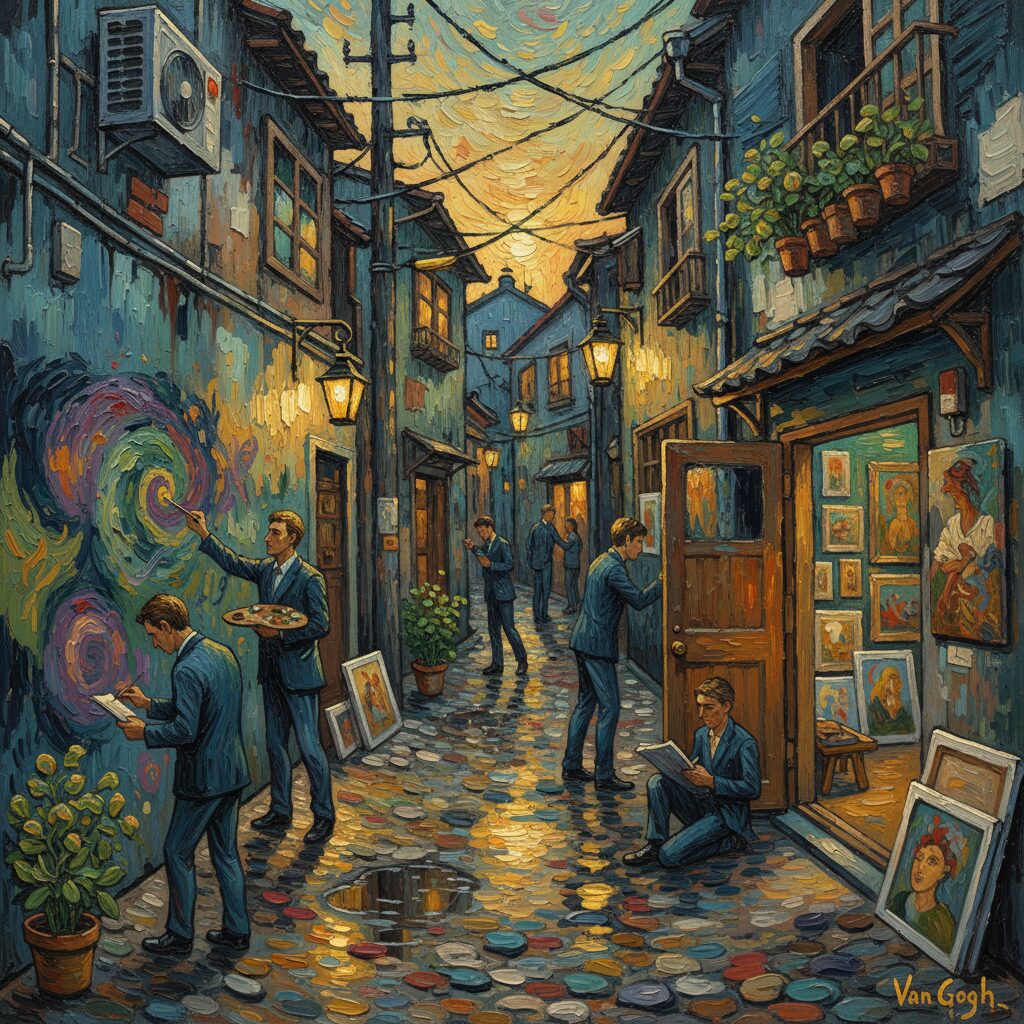
Nakazakicho’s creative spirit extends beyond its shops and cafes, spilling out into the streets themselves. As you explore, keep an eye out for both subtle and bold works of art that decorate the neighborhood. A once-blank wall may be transformed by a vibrant mural, while a forgotten corner might feature a small, whimsical sculpture. Even utility poles and shop signs often showcase creative designs. This public art adds an extra layer of discovery to your journey. The area also hosts several small, independent art galleries, often referred to as “rental spaces,” where local and emerging artists exhibit their work for a week or two. These galleries are usually set in renovated nagaya, displaying art in an intimate, home-like environment. You might encounter exhibitions of photography, illustration, sculpture, or mixed-media pieces. Without grand opening events or formal gallery attendants, you can simply walk in, appreciate the art, and perhaps converse with the artist. This approachable and unpretentious setting offers a unique way to experience Osaka’s vibrant contemporary art scene, providing insight into the creative minds shaping the city’s cultural landscape.
An Insider’s Perspective: Tips for the Thoughtful Traveler
As a travel writer who appreciates the beauty in small details and values safety and comfort, I’ve put together some personal tips to help you make the most of your time in Nakazakicho. Consider this advice as coming from a friend who has spent many joyful afternoons wandering through these charming alleys.
Prioritize Comfortable Footwear
It may seem obvious, but it’s worth emphasizing: wear your most comfortable shoes. You’ll be walking a lot on uneven pavement and might often need to take your shoes off when entering cafes and shops. Opt for shoes that are easy to slip on and off. This simple choice will greatly enhance your day.
Cash Remains Essential
Although Japan is becoming more credit card-friendly, many small, independent spots in Nakazakicho still operate on a cash-only basis. To avoid any inconvenience, carry a sufficient amount of Japanese yen with you. If possible, use smaller bills for minor purchases, as it’s considered polite.
Observe and Respect Your Surroundings
Keep in mind that Nakazakicho is a residential area where people live in beautiful old houses. Be a considerate visitor: keep your voice low, avoid looking into private homes, and don’t block the narrow pathways. Photography is fantastic here, but always be mindful. While capturing general street scenes is fine, it’s courteous to ask permission before photographing shopfronts, store interiors, or artisans at work. A simple smile and polite gesture go a long way.
Tips for Solo Female Travelers
Nakazakicho feels very safe and welcoming for solo women travelers. The vibe is peaceful, and the community close-knit. Although the narrow alleys might feel intimidating at first, they are perfectly safe during the day and bustling with other visitors. Note that after shops close, usually around 7 or 8 PM, the area quiets down significantly. While still safe, the neighborhood’s charm shines brightest during business hours, when all is open and the streets hum gently. Plan your visit for daytime and early evening to fully appreciate everything Nakazakicho offers.
Connecting the Dots: Nakazakicho in Your Osaka Itinerary
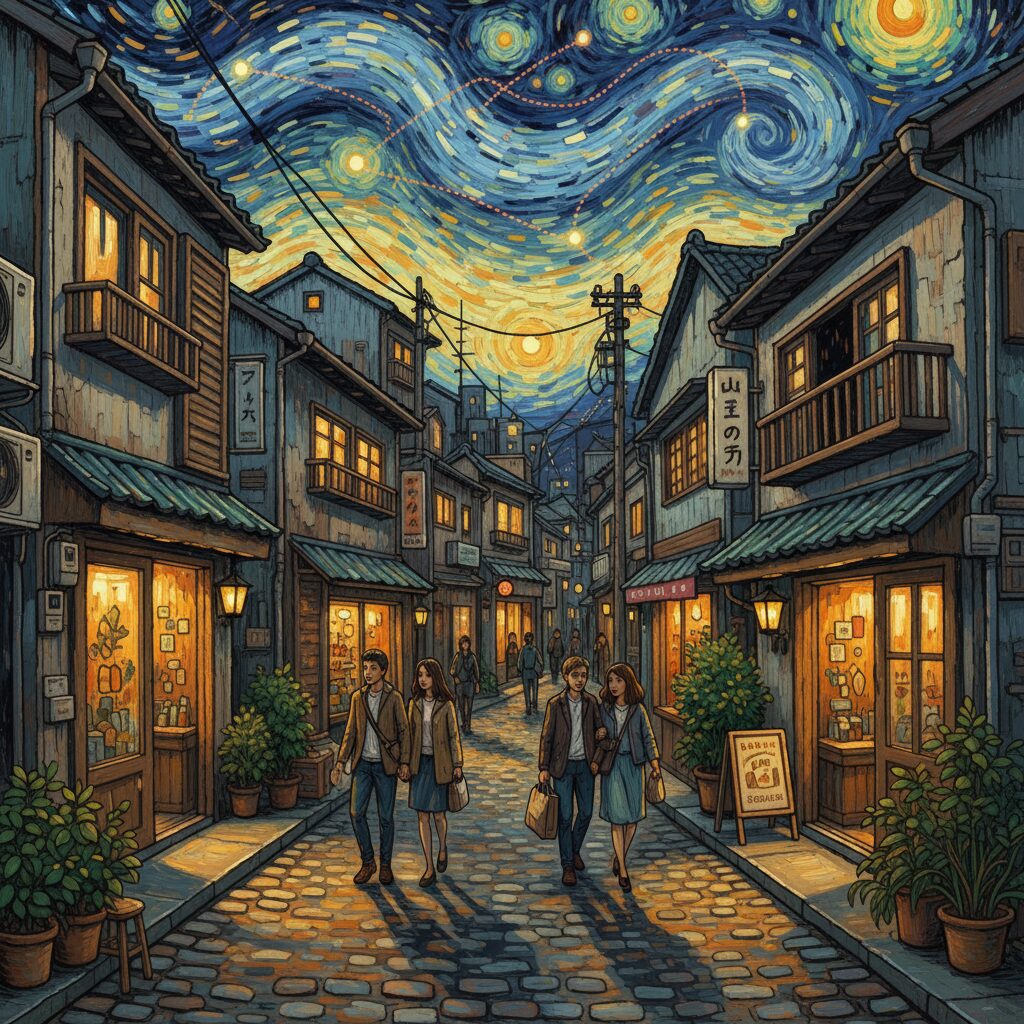
One of the greatest advantages of Nakazakicho is its location. It serves as an ideal contrast to the bustling destinations surrounding it. You might spend your morning admiring the cityscape from the Umeda Sky Building or exploring the extensive shopping malls near Osaka Station, then unwind in the peacefulness of Nakazakicho for a leisurely afternoon. It is also within walking distance of Tenjinbashisuji Shotengai, Japan’s longest covered shopping street. You can easily combine a visit to the vibrant, traditional market atmosphere of the shotengai with the curated calm found in Nakazakicho’s backstreets. Think of Nakazakicho as your urban oasis—a place to recharge and connect with a more intimate, creative side of Osaka before jumping back into the city’s dynamic rhythm.
An Invitation to Wander
Nakazakicho is more than simply a collection of charming cafes and vintage shops. It stands as a testament to the beauty of preservation, the strength of community, and the lasting charm of handmade and heartfelt creations. It’s a place that encourages you to slow down, look more closely, and appreciate the stories woven into the world around you. In a world that often seems overwhelmingly fast and impersonal, a visit here serves as a reminder that magic can still be found in the small, the quiet, and the beautifully imperfect. So, when you visit Osaka, set aside an afternoon for this unique neighborhood. Don’t hurry. Let the winding alleys lead you. Allow yourself to be pleasantly surprised. Find a cafe that feels like it was waiting just for you, discover a piece of art that touches your soul, and carry the gentle, creative spirit of Nakazakicho with you long after you’ve returned to the usual path.




